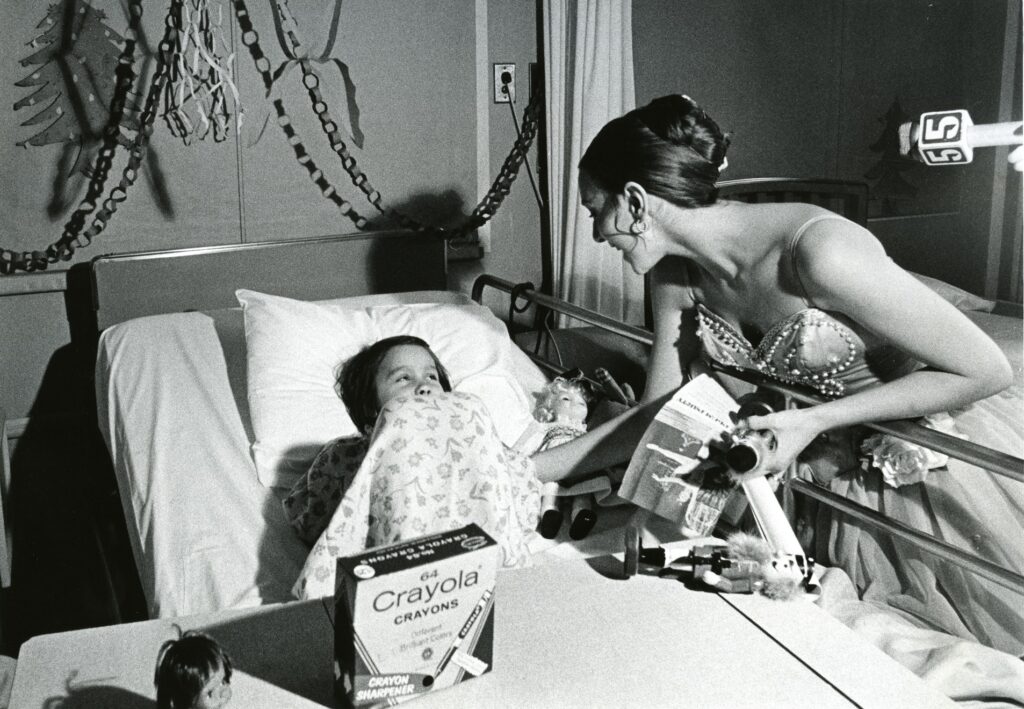We’re bringing you some holiday cheer courtesy of the San Francisco Ballet! In December 1974, dancers in SF Ballet’s 30th anniversary performance of The Nutcracker visited patients in the pediatric wards of Moffitt Hospital, UCSF Medical Center. The performers danced and distributed nutcracker dolls and posters to patients.

San Francisco Ballet’s Diana Weber as the Sugar Plum Fairy and patient, 1974. Photograph collection, News Services carton, SF Ballet Visit folder. Photo by Paul Kolsanoff.
Ballerina Diana Weber, as the Sugar Plum Fairy, chatted with patients and performed with the Rat King.

The Rat King and Diana Weber as the Sugar Plum Fairy, 1974. Photograph collection, News Services carton, SF Ballet Visit folder. Photo by Donna Chaban.
Other characters from the show joined in too, including one of the Rat King’s minions.

Nutcracker performer, 1974. Photograph collection, News Services carton, SF Ballet Visit folder. Photo by Donna Chaban.

Nutcracker performer, 1974. Photograph collection, News Services carton, SF Ballet Visit folder. Photo by Donna Chaban.
To learn more about the event and UCSF Pediatrics in the 1970s, check out this original press release available in our digital collections on HathiTrust.


